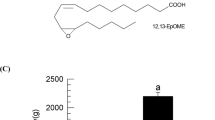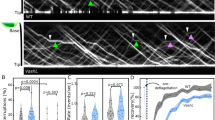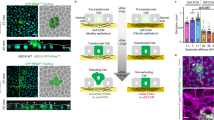Abstract
THE tracheoles supplying the epidermis in Rhodnius are simple or branched tubes, 200–350 µ in length, tapering gradually from a diameter of 0.7–0.8 µ to end blindly at about 0.2µ. Each is laid down within a single cell, the nucleus of which lies at about one-third of the way along the tube. Once laid down, the tracheoles persist unchanged throughout the life of the insect: they do not shed their cuticular linings at moulting, nor are they converted into tracheæ (cf. Keister1 on the late stages of Sciara).
This is a preview of subscription content, access via your institution
Access options
Subscribe to this journal
Receive 51 print issues and online access
$199.00 per year
only $3.90 per issue
Buy this article
- Purchase on SpringerLink
- Instant access to full article PDF
Prices may be subject to local taxes which are calculated during checkout
Similar content being viewed by others
References
Keister, M. L., J. Morph., 83, 373 (1948).
Author information
Authors and Affiliations
Rights and permissions
About this article
Cite this article
WIGGLESWORTH, V. Motility of Insect Tracheoles. Nature 172, 247 (1953). https://doi.org/10.1038/172247a0
Issue date:
DOI: https://doi.org/10.1038/172247a0



